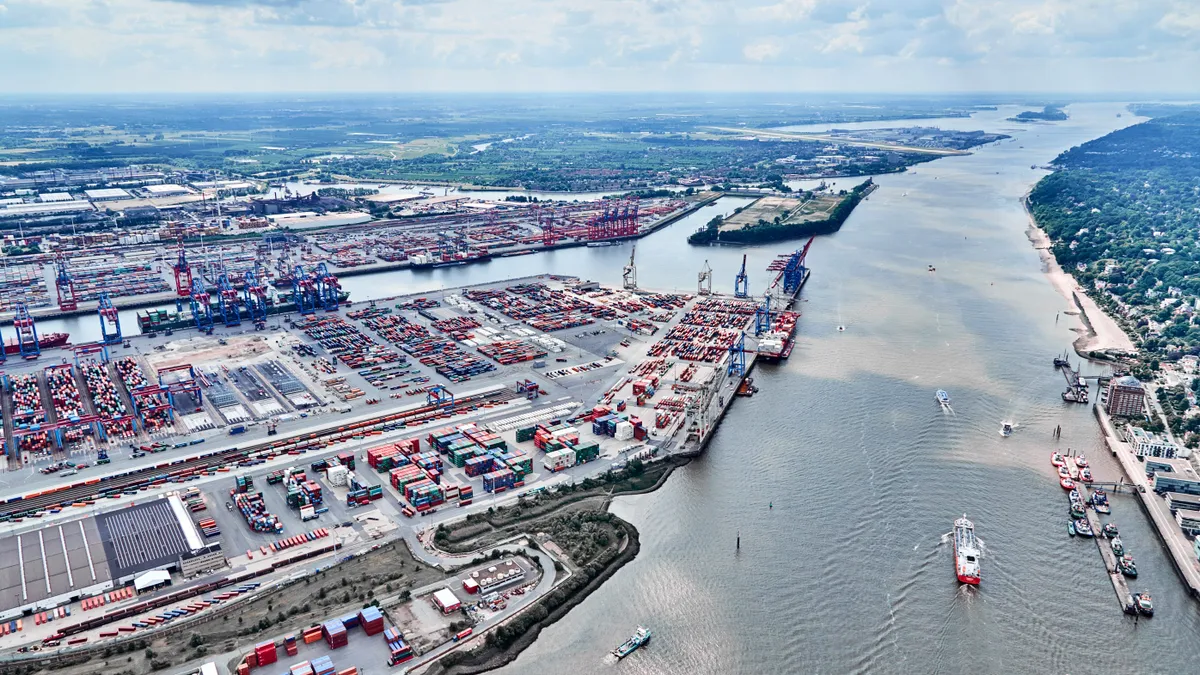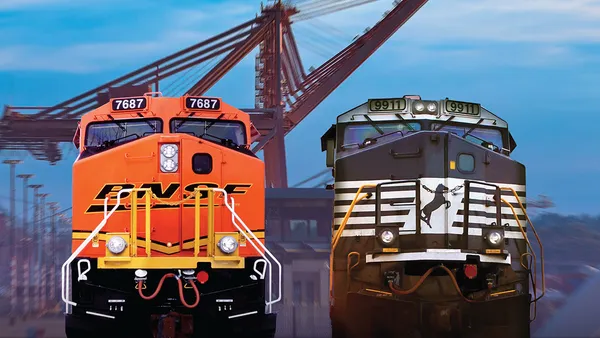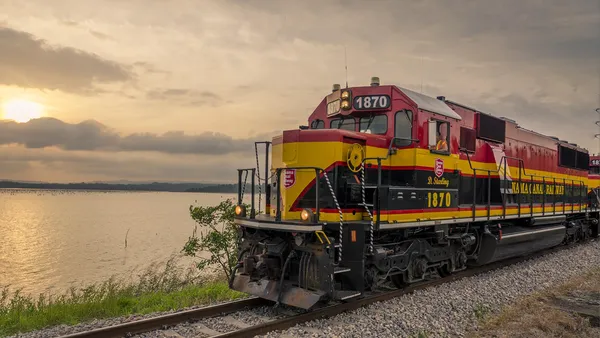Dive Brief:
- High speed cargo trains zooming cargo containers through a depressurized tube will be tested in Europe under a new partnership between Hyperloop Transportation Technologies (HTT) and Hamburger Hafen und Logistik Aktiengesellschaft (HHLA), a container terminal operator in the Port of Hamburg, according to a company announcement.
- The venture will develop a hyperloop transport system linking seaports and inland container operations, moving containers at high speeds using magnetic levitation in a partial vacuum tube to avoid traffic congestion and reduce the environmental impact from transportation.
- The pilot project will begin by constructing a transfer station at an HHLA container terminal in Hamburg and a loading dock linked by a 100-meter cargo route using a specialized cargo container.
Dive Insight:
In 2013, Elon Musk brought new attention to the old idea of enclosing a train in a tube with little to no atmospheric pressure, which greatly reduces drag.
Musk published plans for his version of the hyperloop as an alternative to conventional railroads and invited further open source development. Companies like HTT took up the challenge and are working to bring the idea to market.
The Hamburg cargo pilot project joins other HTT demonstration initiatives already announced, including a feasibility study for a hyperloop between Chicago and Cleveland, a test track in Toulouse, France, and a joint venture with a city in Guizhou, China, to construct a 10-kilometer hyperloop track.
While passenger lines may have a higher profile, hyperloop companies are focusing on cargo operations as well. HHLA sees the hyperloop as an investment in Germany's logistics capabilities.
"As a gateway to the future, we want to employ innovative approaches to make a contribution towards relieving the strain on the transport infrastructure in and around the Port of Hamburg and to use the capacities of our terminal facilities in an even more efficient way," Angela Titzrath, chairwoman of HHLA's Executive Board said in the announcement.
The capsules are driven by a linear induction motor, electromagnetic propulsion and embedded rechargeable batteries, which creates a silent, emission-free propulsion system. The electromagnets allow the capsules to passively levitate over the unpowered track. Because the tube has very little air, aerodynamic drag is greatly reduced. The system has been tested on a full-scale track.
To make the capsules lighter, HTT has developed its own carbon fiber material called Vibranium, which the company says is eight times stronger than aluminum and 10 times stronger than steel. It's also five times lighter than steel, reducing the energy required to propel a capsule.













